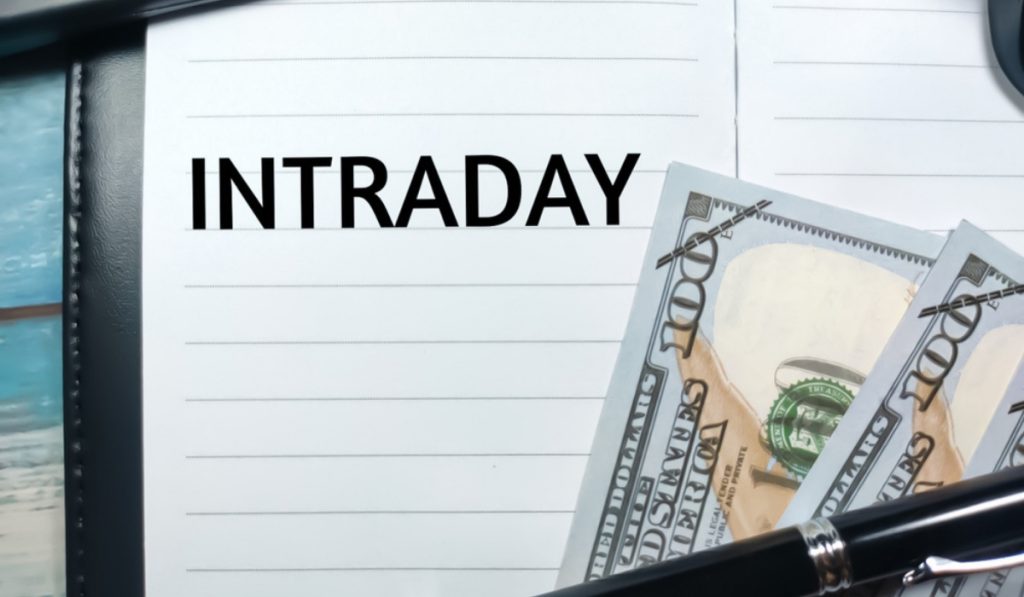Intraday trading means buying and selling a batch of securities within each day, or maybe within seconds. it’s nothing to do with investing in the traditional sense. it’s exploiting the inevitable up-and-down price movements that occur during a trading session. Intraday trading is commonest in the stock markets and on the foreign exchange forex where currencies are traded. Day traders are typically well-educated within the minutia of trading and tend to be well-funded. Many of them add a further level of risk by using leverage to increase the size of their stakes Intraday traders are attuned to events that cause short-term market moves. Trading supported the news is one popular technique. Scheduled announcements like the release of economic statistics, corporate earnings, or rate of interest announcements are subject to market expectations and market psychology. That is, markets react when those expectations aren’t met or are exceeded—usually with sudden, significant moves which may greatly benefit day traders. The online brokers on our list, Interactive Brokers and that we bull, have professional or advanced versions of their platforms that feature real-time streaming quotes, advanced charting tools, and therefore the ability to enter and modify complex orders in quick succession.

Now We Learn Intraday Trading Strategies
1. Knowledge Is Power
In addition to knowledge of day trading procedures, day traders have to keep up with the latest stock market news and events that affect stocks. this will include the Federal Reserve System’s interest rate plans, index announcements, and other economic, business, and financial news. So, do your homework. Make a list of stocks you’d like to trade. Keep yourself informed about the chosen companies, their stocks, and general markets. Scan news and bookmark reliable online news outlets.
2. put aside Funds
Assess and plan the amount of capital you’re willing to risk on each trade. Many successful day traders risk but 1% to 2% of their accounts per trade. If you’ve got a $40,000 trading account and are willing to risk 0.5% of your capital on each trade, your maximum loss per trade is $200 (0.5% x $40,000). Earmark a surplus amount of funds you’ll trade with and are prepared to lose.
3. put aside Time
Day trading requires some time and attention. You will need to give up most of your day. Don’t consider it if you’ve got limited time to spare.
Best Day trading
requires a trader to trace the markets and spot opportunities that can arise at any time during trading hours. Being aware and moving quickly is key.
4. Start Small
As a beginner, specialize in a maximum of one to two stocks during a session. Tracking and finding opportunities is simpler with just a few stocks. Recently, it’s become increasingly common to trade fractional shares. That allows you to specify smaller dollar amounts that you wish to invest. This means that if Amazon shares are trading at $3,400, many brokers will now allow you to purchase a fractional share for an amount that can be as low as $25, or but 1% of a full Amazon share.

5. Avoid Penny Stocks
You’re probably trying to find deals and low prices but stay away from penny stocks. These stocks are often illiquid and therefore the chances of hitting the jackpot with them are often bleak. Many stocks trading under $5 a share become delisted from major stock exchanges and are only tradable over-the-counter (OTC). Unless you see a true opportunity and have done your research, steer beyond these.
6. Time Those Trades
Many orders placed by investors and traders begin to execute as soon because the markets open in the morning, which contributes to cost volatility. A seasoned player could also be able to recognize patterns at the open and time orders to make profits. For beginners, though, it’s going to be better to read the market without making any moves for the first 15 to 20 minutes. The middle hours are usually less volatile. The movement begins to select up again toward the closing bell. Though the push hours offer opportunities, it’s safer for beginners to avoid them initially.
7. Cut Losses With Limit Orders
Decide what sort of orders you’ll use to enter and exit trades. Will you employ market orders or limit orders? A market order is executed at the best price available at the time, with no price guarantee. It’s useful once you just want in or out of the market and don’t care about getting filled at a specific price.
A limit order guarantees the price but not the execution.
Limit orders can facilitate your trade with more precision and confidence because you set the price at which your order should be executed. A limit order can cut your loss on reversals. However, if the market doesn’t reach your price, your order won’t be filled and you will maintain your position. More sophisticated and experienced day traders may employ the utilization of options strategies to hedge their positions as well.
What Makes Intraday Trading Difficult?
Intraday trading takes plenty of practice and know-how and several factors can make it challenging. First, know that you are going up against professionals whose careers revolve around trading. These people have access to the simplest technology and connections in the industry. meaning they’re set up to succeed in the end. If you hop on the bandwagon, it always means more profits for them. Next, understand that Uncle Sam will want a cut of your profits, regardless of how slim. Remember that you’re going to have to pay taxes on any short-term gains investments that you hold for one year or less at the marginal rate. An upside is that your losses will offset any gains. Also, as a beginning day trader, you’ll be prone to emotional and psychological biases that affect your trading for instance, when your own capital is involved and you’re losing money on a trade. Experienced, skilled professional traders with deep pockets are usually able to surmount these challenges.

